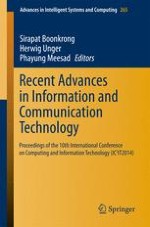Computer and Information Technology (CIT) are now involved in governmental, industrial, and business domains more than ever. Thus, it is important for CIT personnel to continue academic research to improve technology and its adoption to modern applications. The up-to-date research and technologies must be distributed to researchers and CIT community continuously to aid future development. The 10th International Conference on Computing and Information Technology (IC 2 IT2014) organized by King Mongkut's University of Technology North Bangkok (KMUTNB) and partners provides an exchange of the state of the art and future developments in the two key areas of this process: Computer Networking and Data Mining. Behind the background of the foundation of ASEAN, it becomes clear that efficient languages, business principles and communication methods need to be adapted, unified and especially optimized to gain a maximum benefit to the users and customers of future IT systems.
